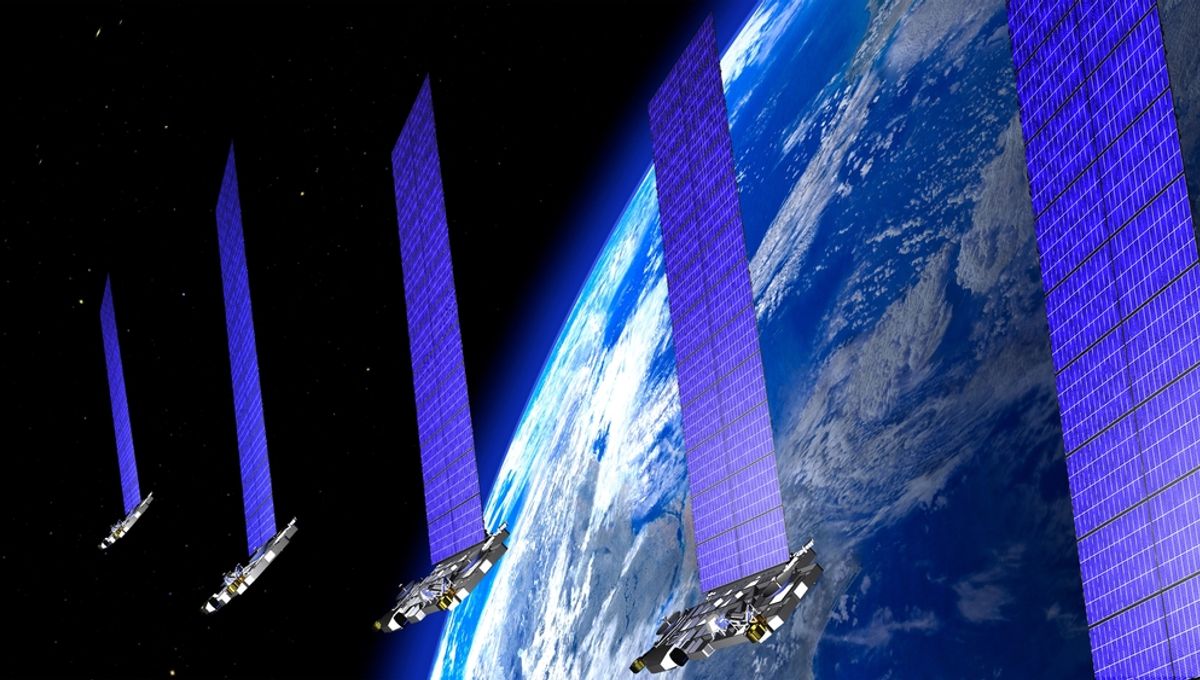
Astronomers have offered some of the first direct proof demonstrating that Starlink satellites are interfering with deep space research, with their emissions drifting outside of their allocated bands. The evidence grows to an increasingly loud chorus from scientists condemning the thick field of communications satellites that the Musk-owned company relies on to provide global internet, complaining of research interference, space junk, and dangerous practices.
Starlink is owned by Elon Musk’s SpaceX and aims to use an array of satellites to offer remote internet services. The particular draw is that the use of satellite instead of cable data links allows people in rural and unpopulated areas to access the internet, as well as people far from civilization, such as ships at sea. However, to do so, Starlink has created a vast network of around 4,400 orbiting satellites that span across the globe, and that’s a potential problem.
Since its inception, scientists have raised issue with the fact that the rapid increase in Starlink satellites could result in them getting in the way of important astronomical research, as well as proving to be a general hazard in orbit. Furthermore, there has been a significant push for a reduction in space junk in Earth’s orbit, which is not conducive with placing a satellite to stare at every corner of our planet. As a result, Starlink isn’t exactly popular among the astronomy community.
Now, it seems unlikely their reputation is going to improve as a new study has detected “unintended electromagnetic radiation” emanating from Starlink satellites that could interfere with astronomical research. The authors claim that onboard electronics within the large constellations of satellites are creating radio signals in areas specifically designed to not be in line with space telescopes, creating a headache for highly sensitive pieces of equipment that look to the far reaches of space.
“Why this matters is because of the number,” Author Dr Di Vruno said in a statement to ABC News.
“Suppose that there is a satellite in space that radiates this kind of signal, there is a very, very small chance that this satellite will be in the beam, in the main site, of your telescope. But if the numbers start to increase, the likelihood of that happening if all the satellites are similar starts to increase.”
The research looked at 68 satellites specifically, using the Low Frequency Array (LOFAR) telescope to analyze their signal emissions. They were looking for signals that aren’t related to the 10.7-12.7 GHz radio frequencies used in broadband communications.
They identified a series of signals emitted from the onboard electronics within the 100-175 MHz range, far below their “allocated” signal band. Alongside, there were some narrow-band radiation emissions that could be detected by the LOFAR telescope, potentially interfering with the detection of distant objects.
Surprisingly, though, what Starlink is doing does not necessarily break any international regulations. There are stringent regulations for terrestrial instruments, but rules for satellites are less strict.
Astronomers from the International Astronomical Union’s Centre for the Protection of the Dark and Quiet Sky from Satellite Constellation Interference (IAU CPS) now hope that this data, along with others, can help with establishing regulations for the future vision of the sky.
The research is published in Astronomy & Astrophysics and outlined in a press release.
Source Link: SpaceX Under Fire As Scientists Find Evidence Starlink Satellites Are Leaking Radiation